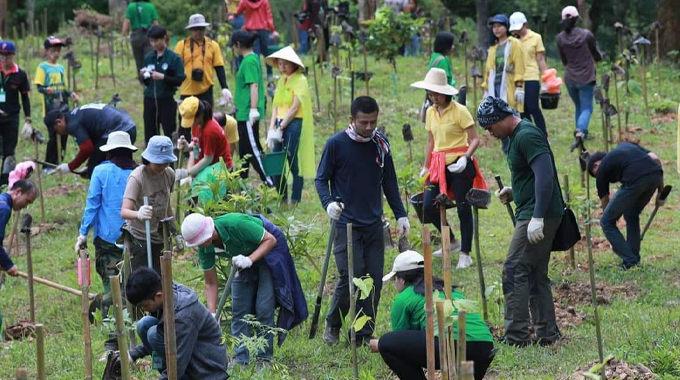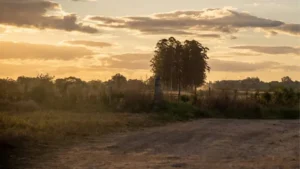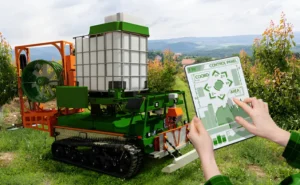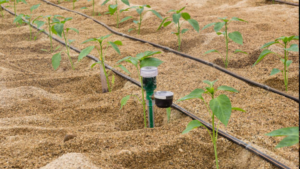Forest Management in Tropical Regions
- July 30, 2024
- 0 comment
Tropical forests renowned for their rich biodiversity and essential ecological functions, face numerous challenges that necessitate effective management strategies. Forest management in tropical regions is crucial not only for preserving these vibrant ecosystems but also for mitigating climate change through carbon sequestration and supporting the livelihoods of millions of people. These forests are under constant threat from deforestation, illegal logging, climate change, and socio-political instability, which exacerbate habitat loss and environmental degradation.

Sustainable management practices, such as community-based forest management, reduced-impact logging, and agroforestry, are vital in addressing these issues. Additionally, robust policies, international cooperation, and technological advancements like remote sensing and GIS play a pivotal role in monitoring and conserving tropical forests. Engaging local communities and integrating traditional knowledge further enhances the effectiveness of these efforts. As we look to the future, ongoing research and innovative approaches will be essential in ensuring the resilience and sustainability of tropical forests, highlighting the urgent need for a collaborative and multi-faceted approach to forest management.
Table of Content
- The Significance of Tropical Forests
- Challenges in Tropical Forest Management
- Sustainable Forest Management Practices
- Policy and Governance
- Technological Innovations
- Community Involvement and Education
- Future Directions and Research Needs
- FAQs
The Significance of Tropical Forests
Biodiversity and Ecosystem Services
Tropical forests are among the most biodiverse ecosystems on the planet, home to countless species of plants, animals, and microorganisms. These forests provide critical ecosystem services, such as water purification, soil stabilization, and pollination, which are essential for the health of the global environment. The complex web of life within tropical forests supports numerous species yet to be discovered, highlighting the intrinsic value of these ecosystems.
Carbon Sequestration and Climate Regulation
Tropical forests play a pivotal role in the global carbon cycle. They act as significant carbon sinks, absorbing large amounts of carbon dioxide from the atmosphere and mitigating the effects of climate change. By storing carbon in their biomass and soil, these forests help regulate the global climate, reducing the greenhouse effect and contributing to climate stability.
Socioeconomic Importance for Local Communities
For millions of people living in and around tropical forests, these ecosystems are vital for their livelihoods. Tropical forests provide food, medicine, fuel, and raw materials. They also offer cultural and spiritual benefits, forming an integral part of the identities and traditions of many indigenous and local communities. Sustainable forest management can enhance the well-being of these communities by ensuring the continued availability of forest resources.
Challenges in Tropical Forest Management

Deforestation and Habitat Loss
Deforestation is one of the most pressing issues facing tropical forests. Driven by agricultural expansion, logging, and infrastructure development, deforestation leads to habitat loss, which threatens biodiversity and disrupts ecosystem services. The loss of forest cover also exacerbates soil erosion and reduces the land’s ability to retain water, further impacting the environment and local communities.
Illegal Logging and Resource Extraction
Illegal logging and unsustainable resource extraction are rampant in many tropical regions, driven by high demand for timber and other forest products. These activities not only degrade forest ecosystems but also undermine efforts to manage forests sustainably. Illegal logging is often associated with corruption and weak governance, making it a challenging issue to address.
Climate Change Impacts
Climate change poses significant threats to tropical forests. Changes in temperature and precipitation patterns can alter forest ecosystems, affecting species composition and forest health. Increased frequency and intensity of extreme weather events, such as storms and droughts, further stress these ecosystems, making them more vulnerable to pests, diseases, and fires.
Political and Economic Instability
Political and economic instability can hinder effective forest management in tropical regions. Conflicts, weak governance, and lack of funding can disrupt conservation efforts and create an environment where illegal activities thrive. Ensuring political stability and economic development is crucial for the long-term sustainability of tropical forest management.
Sustainable Forest Management Practices

Community-Based Forest Management
Community-based forest management involves local communities in the stewardship of forest resources. By empowering communities to manage their forests, this approach promotes sustainable use and conservation. Local knowledge and traditional practices are often incorporated into management plans, enhancing their effectiveness and cultural relevance.
Reduced Impact Logging (RIL) Techniques
Reduced Impact Logging (RIL) techniques aim to minimize the environmental impact of timber harvesting. These techniques include careful planning of logging roads, selective logging, and measures to protect soil and water resources. RIL can help maintain forest structure and biodiversity, making it a sustainable alternative to conventional logging methods.
Agroforestry and Mixed-Use Landscapes
Agroforestry integrates trees and shrubs into agricultural landscapes, combining the benefits of forestry and agriculture. This practice can improve soil fertility, reduce erosion, and increase biodiversity. Mixed-use landscapes that incorporate agroforestry can provide a range of ecosystem services while supporting local livelihoods.
Certification Schemes (e.g., FSC)
Certification schemes like the Forest Stewardship Council (FSC) promote sustainable forest management by setting standards for responsible forestry practices. Certified forests are managed in ways that protect biodiversity, conserve resources, and respect the rights of local communities. Certification can also provide market incentives for sustainable forest products.
Policy and Governance
International Agreements and Conventions (e.g., REDD+)
International agreements and conventions, such as the United Nations’ REDD+ program (Reducing Emissions from Deforestation and Forest Degradation), play a critical role in promoting sustainable forest management. REDD+ provides financial incentives for developing countries to reduce deforestation and invest in sustainable forest management practices.
National Policies and Regulations
National policies and regulations are essential for the effective management of tropical forests. Governments must develop and enforce laws that protect forests, regulate resource extraction, and support sustainable practices. Strong governance frameworks are necessary to combat illegal activities and ensure the long-term health of forest ecosystems.
Role of Non-Governmental Organizations (NGOs)
Non-governmental organizations (NGOs) are key players in tropical forest management. They often work on the ground with local communities, provide technical expertise, and advocate for policy changes. NGOs can also facilitate international cooperation and funding for conservation projects, enhancing the capacity of local and national efforts.
Partnerships Between Governments, NGOs, and Local Communities
Effective forest management requires collaboration between governments, NGOs, and local communities. Partnerships can leverage the strengths of each stakeholder, combining resources, knowledge, and expertise. Collaborative approaches ensure that management plans are inclusive, addressing the needs and rights of all stakeholders.
Technological Innovations

Remote Sensing and GIS for Monitoring
Technological innovations, such as remote sensing and Geographic Information Systems (GIS), are revolutionizing forest management. These tools enable real-time monitoring of forest cover, deforestation, and forest health. Accurate data from remote sensing can inform management decisions and support enforcement efforts.
Drones and Satellite Imagery
Drones and satellite imagery provide detailed and up-to-date information about forest conditions. They can be used to map forest areas, detect illegal activities, and monitor the impact of conservation projects. These technologies enhance the ability to manage forests effectively and respond quickly to emerging threats.
Blockchain for Timber Tracking
Blockchain technology offers a promising solution for tracking timber and ensuring its legality. By creating a transparent and tamper-proof record of the supply chain, blockchain can help combat illegal logging and promote sustainable timber trade. This innovation can build consumer confidence in certified forest products.
Advances in Sustainable Agriculture and Forestry Techniques
Advances in sustainable agriculture and forestry techniques, such as precision agriculture and agroecology, support the integration of forest conservation with agricultural production. These techniques optimize resource use, reduce environmental impact, and enhance the resilience of both forest and agricultural systems.
Community Involvement and Education

Importance of Local Community Engagement
Engaging local communities in forest management is crucial for success. Local people have a deep understanding of their environment and can contribute valuable knowledge and labor. Community engagement fosters a sense of ownership and responsibility, increasing the likelihood of sustainable outcomes.
Education and Training Programs
Education and training programs are essential for building the capacity of local communities to manage their forests sustainably. These programs can provide skills in sustainable agriculture, forest management, and conservation techniques. Empowering local people through education enhances their ability to contribute to forest management.
Traditional Knowledge and Practices
Traditional knowledge and practices are vital components of sustainable forest management. Indigenous and local communities often have time-tested methods for managing forests that are adapted to local conditions. Integrating traditional knowledge with modern practices can enhance the effectiveness of management plans.
Empowering Indigenous Communities
Empowering indigenous communities is critical for forest conservation. Recognizing and respecting indigenous land rights, supporting their participation in decision-making, and providing resources for sustainable livelihoods can strengthen their role in forest management. Indigenous communities are often the most effective stewards of their forests.
Future Directions and Research Needs
Emerging Trends in Forest Management
Emerging trends in forest management include a focus on ecosystem-based management, climate-smart forestry, and landscape-level approaches. These trends emphasize the need to consider the broader ecological and social context in which forests exist, promoting holistic and adaptive management strategies.
Areas Requiring Further Research
Further research is needed to understand the impacts of climate change on tropical forests, develop more effective restoration techniques, and explore the potential of new technologies. Research can also help identify best practices for community engagement and governance, ensuring that management approaches are inclusive and equitable.
Potential for New Technologies and Practices
The potential for new technologies and practices in forest management is vast. Innovations such as artificial intelligence, bioengineering, and regenerative agriculture offer exciting possibilities for enhancing forest resilience and productivity. Continued investment in research and development is essential for realizing these opportunities.
Long-Term Strategies for Conservation and Sustainable Use
Long-term strategies for forest conservation and sustainable use must balance ecological, social, and economic goals. These strategies should prioritize ecosystem health, support sustainable livelihoods, and promote resilience to environmental change. Collaboration among all stakeholders is essential for achieving lasting conservation outcomes.
Frequently Asked Questions (FAQs)
1. Why is forest management important in tropical regions?
Forest management in tropical regions is crucial for preserving biodiversity, regulating the global climate through carbon sequestration, and supporting the livelihoods of local communities that depend on forest resources for food, medicine, and economic activities.
2. What are the main challenges in managing tropical forests?
The main challenges include deforestation and habitat loss, illegal logging and resource extraction, impacts of climate change, and political and economic instability, all of which threaten the health and sustainability of tropical forests.
3. What practices are considered sustainable for managing tropical forests?
Sustainable practices include community-based forest management, Reduced Impact Logging (RIL) techniques, agroforestry, mixed-use landscapes, and certification schemes like the Forest Stewardship Council (FSC), which promote responsible forest stewardship.
4. How do international agreements like REDD+ help in forest management?
REDD+ (Reducing Emissions from Deforestation and Forest Degradation) provides financial incentives to developing countries to reduce deforestation and invest in sustainable forest management practices, thereby helping to conserve tropical forests and mitigate climate change.
5. What role do non-governmental organizations (NGOs) play in forest management? A5: NGOs are vital in forest management efforts. They work on the ground with local communities, provide technical expertise, advocate for policy changes, and facilitate international cooperation and funding for conservation projects.
6. Can you provide examples of successful forest management projects?
Successful projects include community-managed forests in Nepal, which have improved forest cover and biodiversity, and sustainable logging practices in the Congo Basin that balance economic benefits with environmental protection.
7. How are technological innovations used in forest management?
Technologies such as remote sensing, Geographic Information Systems (GIS), drones, satellite imagery, and blockchain for timber tracking enhance the ability to monitor forests, detect illegal activities, and ensure sustainable practices.
8. Why is community involvement important in forest management?
Local community engagement is crucial because communities have a deep understanding of their environment and can contribute valuable knowledge and labor. Community involvement fosters ownership and responsibility, leading to more sustainable outcomes.
9. What are the future directions and research needs in tropical forest management?
Future directions include focusing on ecosystem-based management, climate-smart forestry, and landscape-level approaches. Research needs encompass understanding climate change impacts, developing restoration techniques, and exploring new technologies for forest conservation.
10. What long-term strategies are necessary for the conservation and sustainable use of tropical forests?
Long-term strategies should balance ecological, social, and economic goals, prioritize ecosystem health, support sustainable livelihoods, and promote resilience to environmental change. Collaboration among all stakeholders is essential for achieving lasting conservation outcomes.

Gilbert Griffin
Forestry AuthorGilbert Griffin is a forest management expert specializing in sustainable practices, forest health, conservation, and land management. With extensive knowledge in pest control, disease management, and habitat restoration, Gilbert develops strategies to preserve forest ecosystems and biodiversity. Passionate about the natural world, Gilbert adapts to changes in forest management and stays updated through continuous learning. Gilbert also provides seasonal advice to optimize forest care throughout the year.













Leave your comment